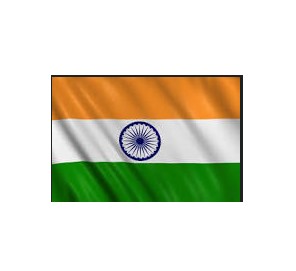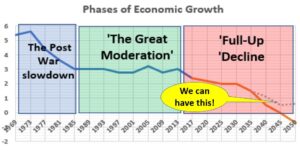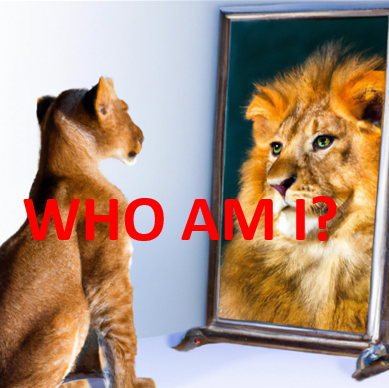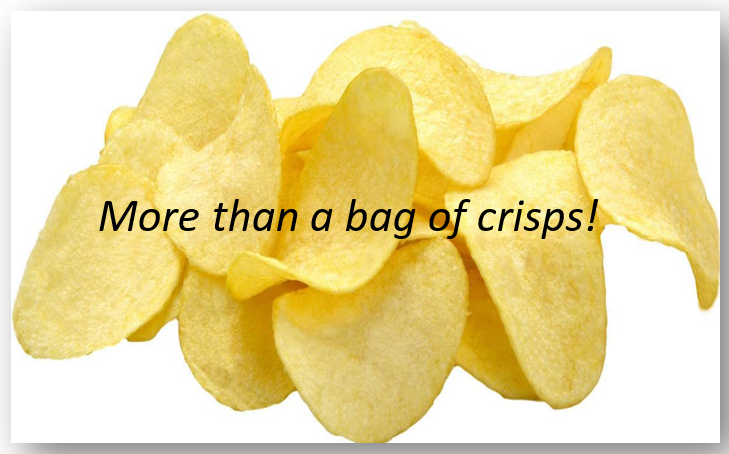The Reluctant Bride
TAKEAWAYS
India is important!
How it geopolitically aligns in the next few years will play a major role in shaping our future world
India should be on everyone’s watchlist
It is wishful thinking of India being proactive, and therefore, it can only be a limited proactive power. There is a need to be flexible to adapt, which one cannot find in India?
Rear Admiral Raja Menon, co-author of The Long View from Delhi: Defining India’s Grand Strategy 2010
This quote was a comment made at a conference held in 2010 by one of the authors of a keynote paper that examined ‘grand strategic options’ for India in 2020. (Malhotra, Raman, Joshi and Singh, IPCS 2010)
As a Brit, I have always had a warm regard for India – as I do for other Commonwealth countries. But this affection also stunted my understanding of the country – so much so that, a few years ago, I went to Delhi for a friend’s wedding assuming I didn’t need a visa. The joy of that overnight stay in Heathrow still lingers!
Now twelve years on, re-reading Menon and Kumar’s paper, I am struck by how profoundly the Indian State has evolved during that time.
INDO-Block profile: From a Segmented World perspective, India is important – very important. The choices it makes in the next few years will be a major factor in shaping the new world order. A few facts – categorised according to the global drivers and inevitable consequences of the Segmented World model – demonstrate why this is the case.
Population: If one includes the supportive part of the Indian diaspora, the population of India today, is greater than South America and Africa combined (ca 1.6 bn) but crammed into only 7% of the area of these two regions. Were the state of Uttar Pradesh (in which New Delhi lies) to be a country, it would be the fourth largest in the world and despite Partition separating Hindu’s and Muslim in 1947, 14% of the indigenous population of India (204 million) is still of Muslim faith.
Pollution: India is the world’s third largest emitter of CO2eq (ca 3 gigatonnes/year) with coal accounting for 46% of its primary energy.
Resource: India has become a major force in global energy. Currently it is the third largest energy consumer; 2nd largest oil (60% from the Middle East) and 4th largest LNG, importer. IEA forecast that India will have the highest global energy demand by 2040 (Reuters, Nidhi Verma 9/2021). On the other hand, India has a large mineral reserve and is self-sufficient in 27 minerals and currently producers 67 key metal and non-metal minerals (Indian Minerals Year Book 2019)
Economic parameters (a selection): India has the 7th largest GDP (IMF 2022) at $2.8Tn – similar to France or UK. The Public debt to GDP ratio is among the highest in emerging economies at ca 90% (National Herald, Banerjee 6/22) with a sovereign debt rating just above junk (Satiji, Bloomberg, 2022). The Corruption Perception Index (Transparency International) is 40, ranking the country 85 out of 180.
Political parameters (a selection): India was recently reclassified by the V-Dem Institute from an Electoral Democracy to an Electoral Autocracy with a Liberal Democratic score of 93 out of 173; India’s ranking in World Press Freedom Index fell to 150th out of 180th in 2021 (Hindustan Times 4/5/22). Military spend is the third highest in the world at $77bn. ca 2.7% of GDP. India has between 160 Nuclear warheads (NB: Pakistan: 165; (Stockholm Peace Institute 2020) with five million employed by the military – the 4th largest in the World.
Social parameters (a selection): GDP (nominal) per capital as $2,543 (IMF 2022) ranking 160 out of 216. India is still a poor country.
Governing the INDO-Block: How can such a vast, complex entity be managed in the years to come? It is a problem the great Empires of the past resolved by uncompromising autocratic rule. Today, there is only one comparable example, the SINO-Block (currently the PRC). Alone in the world these two Powerblocks face the same fundamental issue: How to manage a billion plus people?
THOUGHT
If you are living in a relatively small (i.e. less than 100 million), liberal democratic country, how would your form of governance and institutions function, were the population to be an order of magnitude larger. This is an important perspective when judging the solutions these large entities have chosen
In the Modern era, China solved the problem, by imposing pervasive, autocratic control through the Chinese Communist Party. The norms of western liberal democracy: tolerance of diversity, adherence to the rule of (International) law and respect for human rights (as defined by the Universal Declaration of Human Rights) were applied, at best, to the favoured, in-country groups. Universalism was replaced by Zhou Enlai’s doctrine of ‘non-interference’ (see Blog dated 13/3/22) or, in ‘special cases’ like Hong Kong, by Xi Jinping’s, ‘do-as-I say’.
But how else could such a huge population be managed? Devolution or Federalisation is the answer given by many smaller-sized, liberal democratic societies. But as Chinese history demonstrates ( i.e. the Song, Yuan, Ming and Qing dynasties 960-1911) balkanisation inevitably leads to legislative gridlock and internecine conflict. Not a viable solution for the larger Powerblocks, nor, as the Segmented World model shows, for a world requiring greater cooperation to solve global problems in the years to come.
How is the INDO-Block tackling the problem of size? Until 2014, India adopted the British approach of ‘muddling along’. The caste system provided the structure and the former colonial power, the framework for governance and social institutions. Despite a, sometime, frosty relationship with the US, India, nevertheless, prospered in the expanding globalised world created by the old American Imperium. It exported its labour (that today returns over $90bn / year in remittances) and developed a huge educated middle class – predicted to become the largest, globally, by 2025. (BBC News; Biswas 15/11/17)
Not surprisingly, the astronomic improvement in living standards that globalisation bought to India, also gave rise to a strong desire for a new national identity – free from colonial associations.
Enter Narendra Modi: It is easy, living in a relatively small, liberal democratic country, to be highly critical of Modi’s decision to use the political ideology of the Hindutva to forge a new image for India (Foreign Policy, 13/7/20)
Put crudely, Modi’s model is to create a Hindu state by downgrading the status of other religious groups – most notably the 200 million of Muslim faith. Again, crudely, the Chinese have the same approach toward Han and non-Han people. As in India, there is tolerance for small ethnic groups, but larger groups that pose a threat – such as the Uighurs in Xinyang – are suppressed. In both cases the group that is perceived to threaten the ruling powers in India and China are of the Muslim faith.
Gird thy loins: The greatest benefit I find employing the Segmented World Perspective, is that it allows me to step back; put aside my own prejudices and view problems objectively using a global prism.
With that perspective, what strikes one immediately is the pivotal role – whether willingly or not – India will play in the global configuration of power over the next thirty years. That role though, will be conditioned by the global drivers and inevitable consequences as defined in the Segmented World Model.
At present we have no indication which way the world will turn – whether towards a Stagnant, Anxious, Divided or Emergent outcome. But what the model irrefutably shows is that, over the next thirty years, we will pass into a period of history that I have termed Full-Up Decline (see ‘Something. . . is Happening presentation. @thesegmentedwo1, thesegmentedworld.com)
Figure 1: Phases of Economic Growth 1969-2050 (‘Something . . . is happening, 2022)
No government official advises Modi that India – as with governments around the world – faces a future dominated by an unrelenting struggle for resource; a growing population (in the INDO-Block’s case, three times faster than in any other Powerblock) and the increasing, indiscriminate impact of climate change and pollution.
Government planning is based on a positive view of the future with a rhetoric to match and backed-up by vanity ventures, such as the Indian Lunar Exploration Programme, to boost national pride (India Times August 2019).
In reality, as Full-Up decline imposes itself, India – along with all nation states – will have to focus on providing the basic necessities: energy, food, water and shelter. To do that it must decide on the best geopolitical arrangement to achieve that goal.
GDA v GPA: In its simplest form the geopolitical choice, for how best to cope with Full-Up Decline, is between the autocratic or democratic model of governance. In these blogs I use the language in the fictional, Segmented World book series to describe two groupings: the Global Democratic Alliance (GDA) and the Global Peoples (aka Autocratic) Alliance (GPA). Which geopolitical group will the INDO-Block align with?
At present India has not made that choice. It is acting like a bride being wooed by two suitors – neither of whom, instinctively, it wishes to marry. But as in many traditional societies, marriage is as much to do with necessity as it is love. So let’s look at the pluses and minuses the bride must consider, in selecting her suitor- beginning with the GPA.
Pro
- Resource: Guaranteed long-term supply from the RUSSO-Block storehouse (see Blog, A Beautiful Irony, 30/05/22).
- Conflict: Potential for a rapprochement with the SINO-Block, who, currently represents the main military threat in the Himalaya and in supporting Pakistan – the INDO-Block’s long-term, nuclear-armed, opponent to the west.
- International Politics: A guaranteed top seat at the table of all future GPA bodies (re: 14th BRICS Summit 2022 (brics2022.mfa.gov.cn).
- Internal politics: Non-critical partners that will not impede the full implementation of Hindutva
- Pollution: Less stringent external controls on GHG emmisions.
Con
- Trade and technology: Rejection and isolation from GDA trade and technology. Severing of outsourcing ties and exports to main trading partners.
- Military: Loss of military cooperation (Quad) – increasing dependence on RUSSO and SINO-Block supplies.
- Population: Disconnection with the largely GDA-based and influential part, of the Indian diaspora along with a significant minority of indigenous, INDO-Block intellectuals.
And here are some of the pros and cons that will come from aligning with the GDA.
Pro
- Resource: Diversification of resource access – removing single source dependency.
- Trade and technology: Enhancement of established links with main trading and technology partners.
- Military: Strengthening of QUAD (Quadrilateral Security Dialogue: US, India, Japan and Australia) with the potential to evolve into a NATO type security group for the Indo-Pacific region.
- Politics: Full membership of the G8 (Hindustan Times 28/6/22) – the INDO-Block replacing the RUSSO-Block expelled in 2014. Strong support for a permanent seat on the Security Council (India Today 8/2021).
Cons
- Conflict: Increased border tensions with GPA members, notably the SINO-Block and GPA-supporting nation states such as Pakistan.
- Trade and politics: Loss of traditional economic and political ties with the RUSSO-Block.
- Military: Expensive and time delayed replacement of Russian military supplies and equipment that currently account for 45% of the defence budget.
- Internal politics: Resistance from GDA member states to the implementation of the Hindutva ideology.
Reading through these pros and cons, one can understand the bride’s reluctance – even to get married at all! But fence sitting, as Admiral Menon’s comments implies, may not be the preferred natural route for the INDO-Block.
But not choosing, runs the even greater risk of alienating both sides.
So, either the INDO-Block: –
- Adopts the autocratic model and aligns with the SINO and RUSSO-Blocks (and supporting countries) and in doing so creates a new global force, representing 70% of humanity, or. . .
- Re-instates liberal democratic principles and aligns with the AM and EURO Blocks (and supporting countries) and, in doing so, reinforce the existing global order.
If India makes no decision and continues to fence sit, then its future will be decided by external events. For example, any intensification of the one state approach, turning 200 million of the population into second-class citizens, will inevitably invite the opprobrium of the leading GDA and Muslim countries. That could drive the INDO-Block into the GPA camp. Alternatively, increased border tensions stirred up by the SINO-Block – with the RUSSO-Block unwilling or unable to supply arms – may force the INDO-Block into building deeper relationships with GDA countries (e.g. Australia for Resource for example, or the QUAD countries for military support).
The World that India makes: Whichever suitor India chooses – or is chosen for her – the geopolitical outcome will have a lasting effect on how the world deals with the most threatening enemy we all face: the global drivers and inevitable consequences that fifty years of globalisation have unleashed.
The Reluctant Bride needs to decide . . . and soon.
As usual, all comments welcome.
David
31st June 2022




